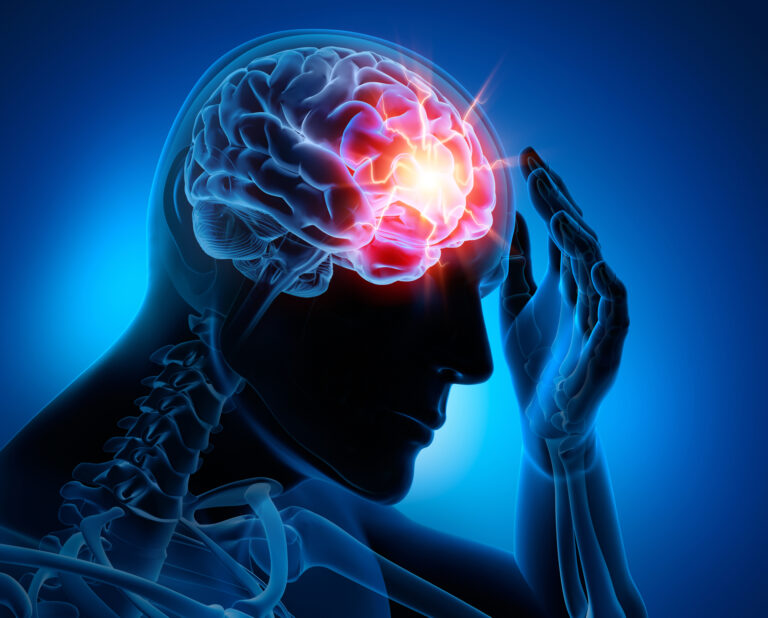What Is CTE?

Chronic traumatic encephalopathy (CTE) is a progressive and degenerative brain disease. It’s primarily associated with repeated head traumas. Once an obscure term, CTE has now entered the lexicon of athletes, sports enthusiasts, and medical professionals alike. With increasing awareness of its debilitating effects and prevalence, understanding CTE is crucial for those involved in contact sports.
The Connection Between CTE and Repetitive Brain Trauma
Repetitive brain injuries likely cause CTE. This includes both concussions and subconcussive hits. This condition was first identified in boxers in the 1920s by pathologist Dr. Harrison Martland. He proposed that head injuries could cause permanent changes in the brain and neurological effects. It was popularly termed “punch drunk syndrome.”
For nearly a century, there were only scattered confirmed cases of CTE – until 2005. The brain disease was diagnosed in a retired NFL player. Soon thereafter, the Concussion Legacy Fund and UNITE Brain Bank were established. The Brain Bank is the world’s first repository for CTE research. It has led to a much stronger understanding of the prevalence of CTE and risk factors.
Today, it’s understood that CTE can affect athletes from various sports, particularly football. Athletes who play hockey, soccer, and other contact sports are also at risk. However, even non-athletes can develop CTE after multiple head injuries. This includes victims of domestic violence, military members, and victims of car accidents and falls.
How Common Is Chronic Traumatic Encephalopathy?
Growing research has provided insight into the prevalence of this frightening brain disease.
A 2017 study examined 202 brains of deceased football players. 111 of the athletes played in the NFL, and 110 of them had CTE. A separate study the same year found that 90 out of 94 brains of former NFL players had CTE.
In a study to examine the rate of CTE, researchers looked at samples and records from 450 non-athletes and 300 contact sports athletes. About 6% of the brains had some or all of the signs of CTE.
In a recent study of the brains of 152 contact sports athletes who died before the age of 30, 40% had CTE. Of the athletes with CTE, 80% were amateur athletes, and 7% played football.
Common Symptoms and Signs of CTE
CTE manifests in various ways, affecting cognitive, mood, and behavioral functions. It may take years or even decades before the effects of CTE become apparent.
The three broad categories of symptoms include:
- Cognitive changes: memory loss, trouble concentrating, and poor executive function, such as organizing and planning.
- Mood changes: Apathy, depression, suicidal thoughts, and frequent mood changes.
- Behavioral changes: Uncharacteristic and increasingly impulsive and aggressive behavior, violent outbursts, and substance abuse.
While little is known about CTE, researchers believe there are two forms of the disease. Early-onset CTE typically presents in the 20s to 30s with symptoms that are more behavioral and emotional. The other form presents later in life with cognitive impairment and poor motor control that progresses to a form of dementia.
The Impact of CTE on Athletes and the Sports Community
CTE affects athletes, their families, teams, and the broader sports community. Athletes who develop CTE face a decline in their quality of life with physical and mental challenges. Their families may struggle with caregiving responsibilities and emotional distress. Leagues and sports organizations are under increased scrutiny to better protect players.
Many high-profile cases of violence have involved athletes later diagnosed with CTE. Aaron Hernandez is a well-known example. He was found guilty and then acquitted of two murders before committing suicide. An autopsy revealed he had the most severe CTE ever seen in someone his age.
One of the most significant challenges with CTE is that it can only be diagnosed post-mortem. There is no cure for the disease or treatment that can slow down its progression. When CTE is suspected, treatment focuses on managing symptoms.
Contact a Personal Injury Lawyer For Help If You or a Loved One Suffered a Brain Injury Due to Someone Else’s Negligence
Understanding CTE is essential for athletes and the broader sports community. We now understand that head trauma in sports can have serious and lasting effects, even without symptoms. It’s just one of the many possible consequences of a brain injury, even a mild concussion.At Lawson Personal Injury Attorneys, we are committed to giving victims the tireless representation they deserve. If you or a loved one suffered a serious brain injury in a sports accident or due to someone else’s negligence, we are here to help. Contact our law office to schedule a free consultation to discuss what we can do to help you move forward.
Contact the Brain Injury Law Firm of Lawson Personal Injury Attorneys in Lawrenceville for Help Today
For more information, please contact our experienced brain injury lawyer at Lawson Personal Injury Attorneys to schedule a free initial consultation today. We have a convenient location in Lawrenceville, GA.
Lawson Personal Injury Attorneys
320 S Perry St, Lawrenceville, GA 30046
(678) 446-3655
